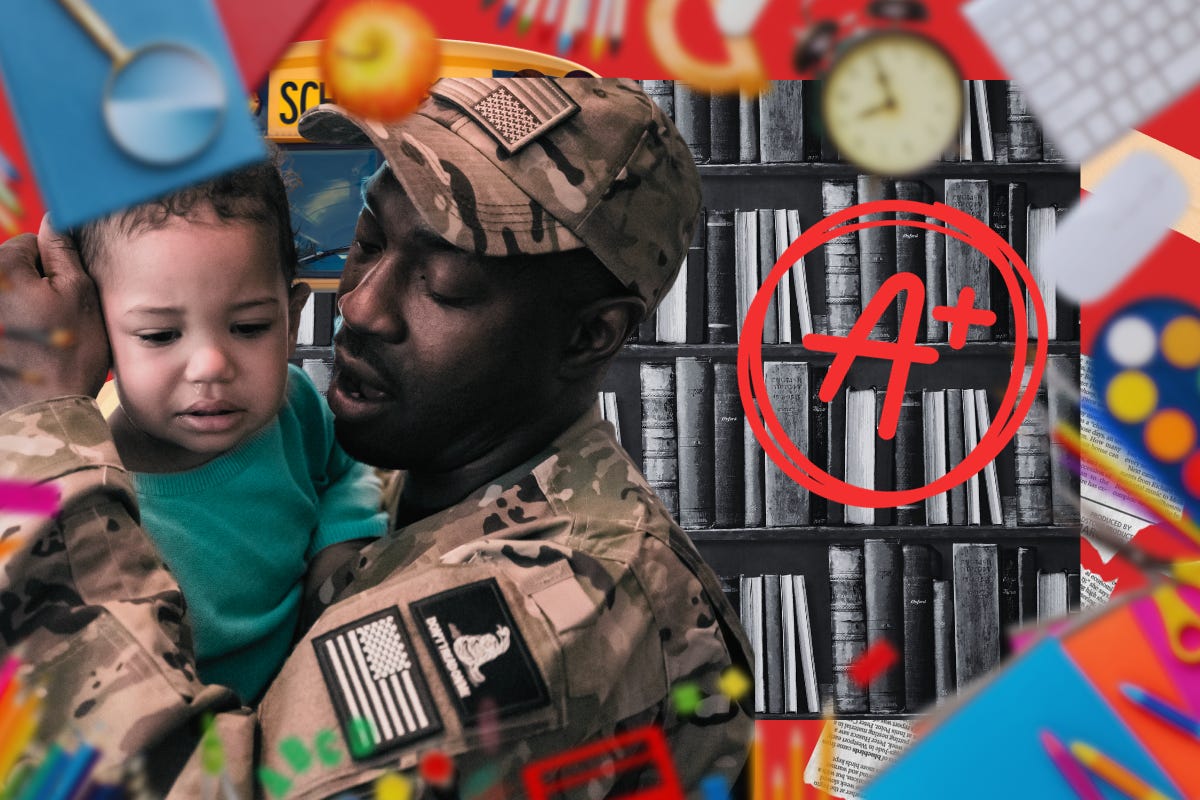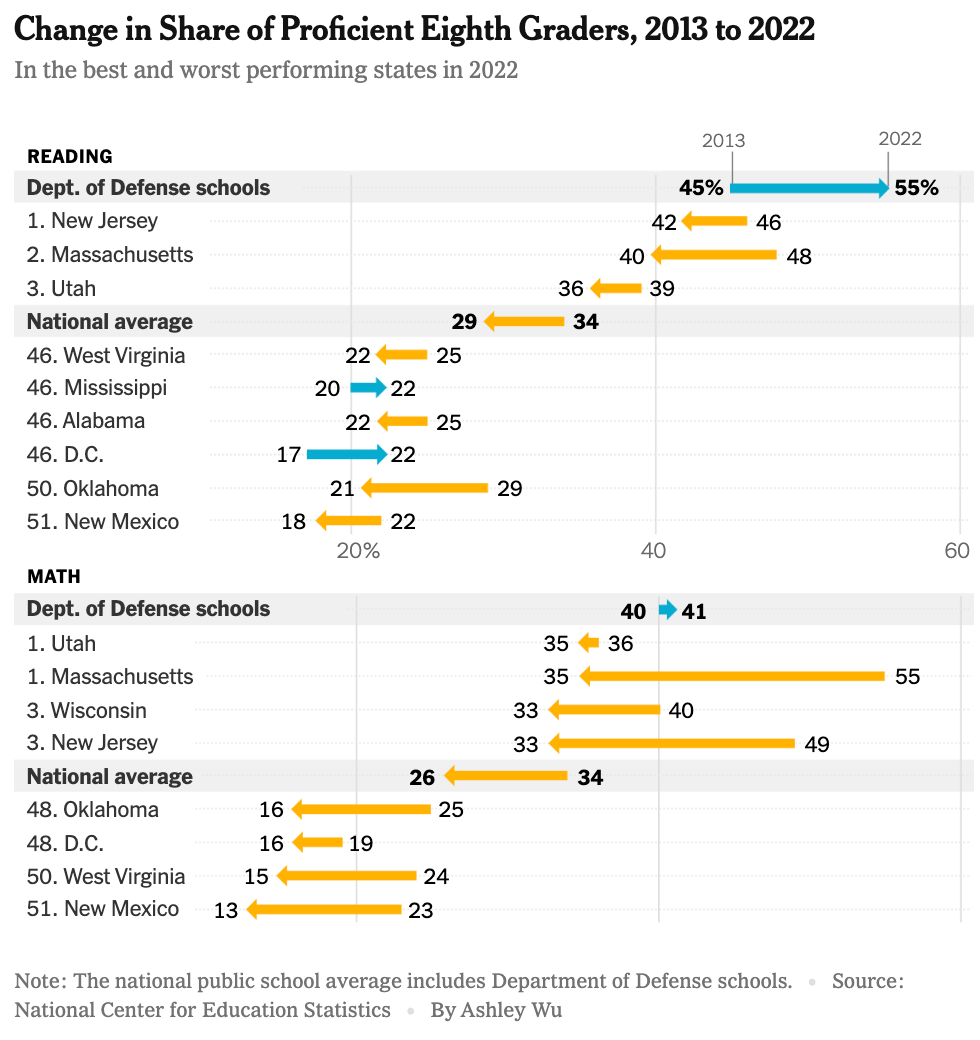'Government schools' might not be the own you think it is
America's best performing, most equitable school system has a surprising landlord.
Who runs the best public schools in the U.S.?
Great question. I’m glad you asked. You might not like the answer.
Turns out, according to a New York Times article, it’s the government. More precisely, the Pentagon.
That busts a few myths about education. Let's talk about it.
First, the myth is that government schools can't do anything right. The government is the problem. Except in the case of the public school system operated by the Department of Defense. That system does better academically than the spotty network of America’s 14,000 decentralized districts that have local school boards, a superintendent, and free will to make every error possible.
The DoD schools are Verizon. The other schools? Mint Mobile.
There's no magic to the outsized gains, just a few sensical things they do that support better outcomes.
They have a standardized curriculum across their 50 schools in the United States and 100 globally. That ensures that their students, the children of enlisted service people and the military’s civilian employees, get equal access to the same high-quality, rigorous course work. Also, there is continuity in their lessons when they move from one school to another.
So much for the myth that you can’t fix schools until you fix the kids.
The DoD begs to differ.
Another myth is that money doesn't matter. The military is spending $25,000 per student, which seems like a lot because in some places in the United States, we only spend $12,000 or we spend $16,000. Yet, in places like New York and New Jersey, we spend about the same or more than military-operated schools.
Here’s a kicker: the DoD teachers get paid more. A teacher in the NYT story says she earned $31,000 a year as a teacher in her traditional public schools. She doubled that by moving to the DoD system. And after a few years, she's making $88,000 a year.
Maybe this is why they have been able to attract and retain well-prepared teachers while other districts complain about teacher vacancies and a profession that is no longer attractive to new recruits.
You can have great teachers. But you have to pay for it. #MoneyMatters. That’s the Tweet.
Another bust myth is the one that suggests we can ignore the broader needs of young people and get the majority of them across the proficiency threshold. The military makes provides government-funded housing and healthcare. So there are no food deserts. There is no food insecurity. There's no housing insecurity. They all have at least one parent working. So obviously, you have a household where you have at least an income, where your health needs are taken care of, your food needs are taken care of, and your housing needs are addressed. Isn't that something that many public schools wish they had with the students they serve?
To be clear, when I say that these schools are doing better than others, let's just be clear about what that means.
Look for yourself:
Between 2013 to 2022, the DoD schools saw an increase in proficiency from 45% to 55%. That might not sound great to you. You might be saying to yourself, “55% proficiency. Doesn't that mean that there are still 45% of young people that are not proficient?”
It’s a good question, but that’s better than you think when you consider the truly dismal outcomes in other states.
Look at You have a state like New Mexico on that chart. They dropped from 23% proficiency in 2013, all the way down to 13% in 2022. Yikes.
This isn’t to pick on them. Almost all states lost ground according to the article.
Two states besides the DoD saw gains, Mississippi and D.C. (Well, that’s one state and one district that should be a state). But their gains were small. They started from a very low place and didn’t rise much. For example, Mississippi started at 20% proficiency, and nine years later got to 22%.
The DoD started from a good place in 2013 and made substantial gains over the same time period.
None of this is to pit one public system against another. I just think we have to constantly study success more than we study failure. We are too bogged down by nihilism, cynicism, and damaging myths that create an ugly Pygmalion effect that robs our kids of their potential.
My takeaway: the government can do schools well, but the secret ingredients might be three things that inefficient, conventional education systems won’t embrace. Standardization, professionalization, and centralized controls.
You can hate me now.






